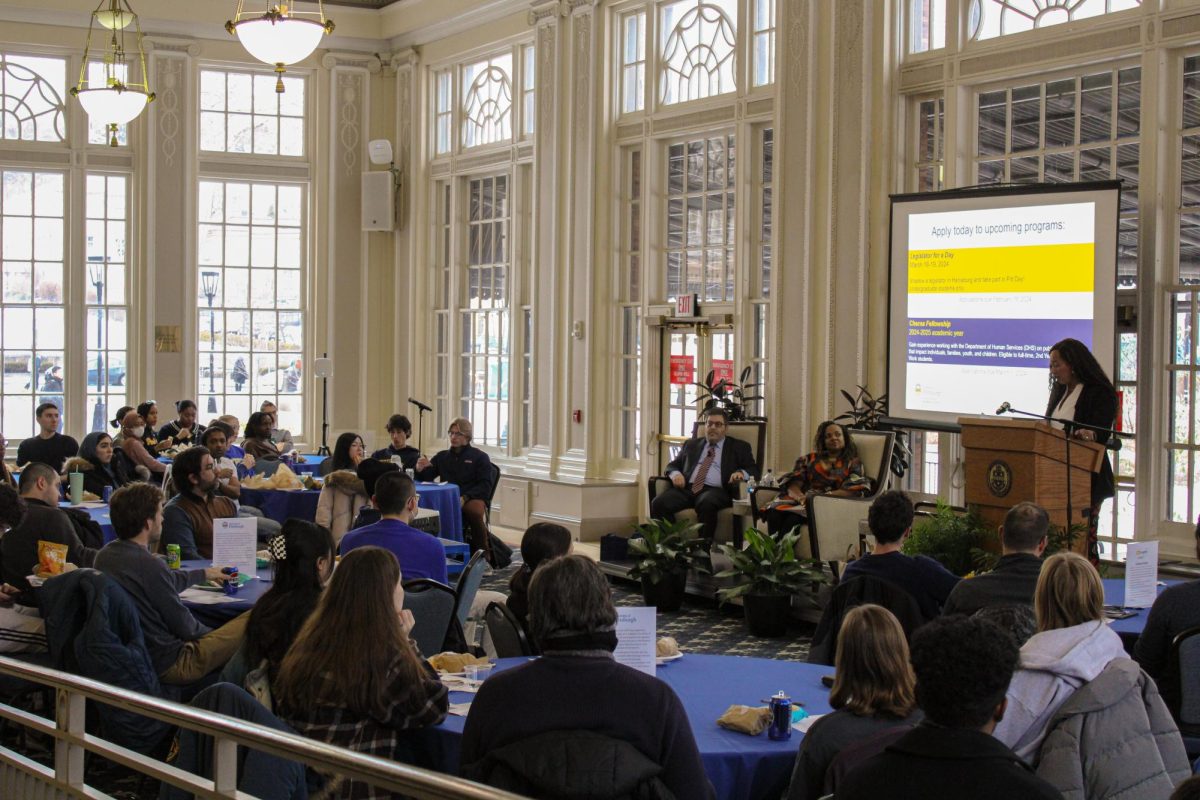Following the Students for Fair Admissions v. Harvard Supreme Court decision, which ruled that race-based affirmative action programs in higher education admissions violated the equal protection clause of the 14th Amendment, underrepresented racial and ethnic groups are feeling dissuaded from applying to universities, according to Kyaien Conner.
“This decision has been the subject of much debate and controversy with this as a victory for equal protection under the law, and others have criticized this as a major setback for diversity and inclusion in higher education,” Conner, director of the Center on Race and Social Problems, said. “This decision is expected to have far-reaching consequences.”
All Angles — a speaker series hosted by the Institute of Politics — held a panel discussion on affirmative action Thursday afternoon in the lower lounge of the William Pitt Union. Panelists included Dana Thompson Dorsey and David Bernstein with Kyaien Conner as moderator. The panel discussed the history of affirmative action and its inability to uphold its promise and intention.
Thompson Dorsey, an associate professor of educational leadership and policy studies at the University of Southern Florida, said affirmative action policies intended to help those who are underrepresented in racial and ethnic groups in employment settings, and called it a “political nightmare.”
“Those who support it think it is necessary to fulfill that original intent of providing equitable and equal educational access and opportunities to students who have been historically disenfranchised,” Thompson Dorsey said. “But those who are against it think the policies of preferential treatment based on race is unconstitutional.”
However, Thompson Dorsey said there is a severe wealth gap between different races. White individuals have six times as much wealth as Black individuals and five times more wealth than Latinx individuals, according to Thompson Dorsey. She added that the Supreme Court has heard seven cases about affirmative action throughout its history.
“Nine states … have banned affirmative action either through a ballot initiative where citizens voted or governor’s executive order,” Thompson Dorsey said. “There have been significant drops in applications of matriculation of underrepresented students of color.
Thompson Dorsey said states such as California have had trouble matriculating more students of color since banning affirmative action.
“For example, California banned it in 1996,” Thompson Dorsey said. “[As] the first state to do [so], they experienced approximately [a] 40% drop in Black and Latinx students applying to university.”
Bernstein, a professor of law and executive director of the Liberty and Law Center at George Mason University, said affirmative action practices are largely implemented to include Black students typically excluded from educational and economic opportunities. He said the United States has not fully accomplished this goal.
“The population of the United States diversified the deal,” Bernstein said. “It turns out that most of the beneficiaries of affirmative action policies are no longer people who are descendants of slave owners. In some cases, people who are arguably limited in their opportunities are not whites but Asian Americans.”
Bernstein said higher education has shifted from readdressing historical discrimination and became concerned with ensuring that each racial group is present in their class cohort. He said race can be used for diversity but cannot be used to address prior discrimination against groups.
“For example, in 2008, someone did a study of the Ivy League schools, and they found that 43% of the Black students at the Ivy League schools are first or second-generation immigrants,” Berstein said. “That was when there was a much smaller percentage of African first and second Black immigrants in the country.”
Bernstein said there are additional problems with government contracts. He said government contracting intended to bring African American contractors into the “economic mainstream” but has not done so.
“It’s not based on diversity, but based on bringing people into the marketplace,” Bernstein said. “All members of official minority groups can be exactly the same preference — doesn’t matter if you’re an inner city kid and growing up in Baltimore after your parents were enslaved in Mississippi for generations and moved up north in the ‘50s or whether you’re a recent immigrant from Bangalore who got his Ph.D. at Stanford and MIT and opened up a Silicon Valley tech company and now doing contracts with the Defense Department.”
Thompson Dorsey said she believes that affirmative action did not achieve its intended goals, and added that white men benefited most from these resources.
“People didn’t really call each other by white [or] Black,” Thompson Dorsey said. “I think that came about pretty much to create a hierarchy and pin Black, Native Americans and white people against each other, particularly those who are indentured servants and slaves.”



